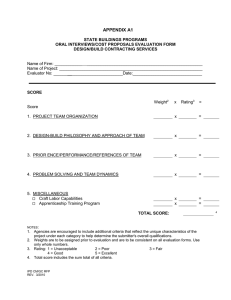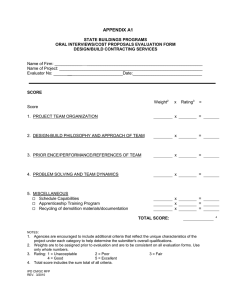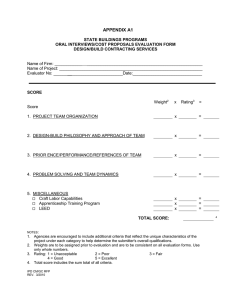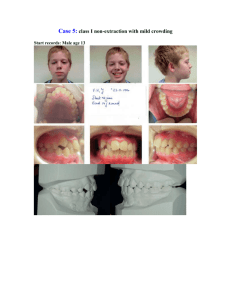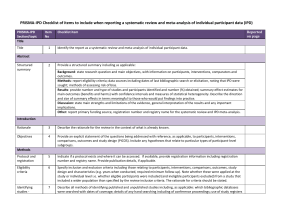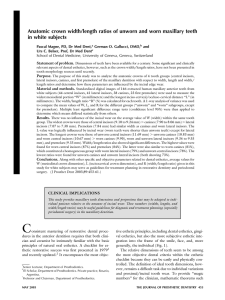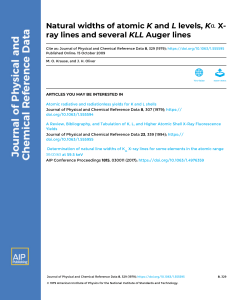ABSTRACT: Statement of problem In rehabilitating ...
advertisement
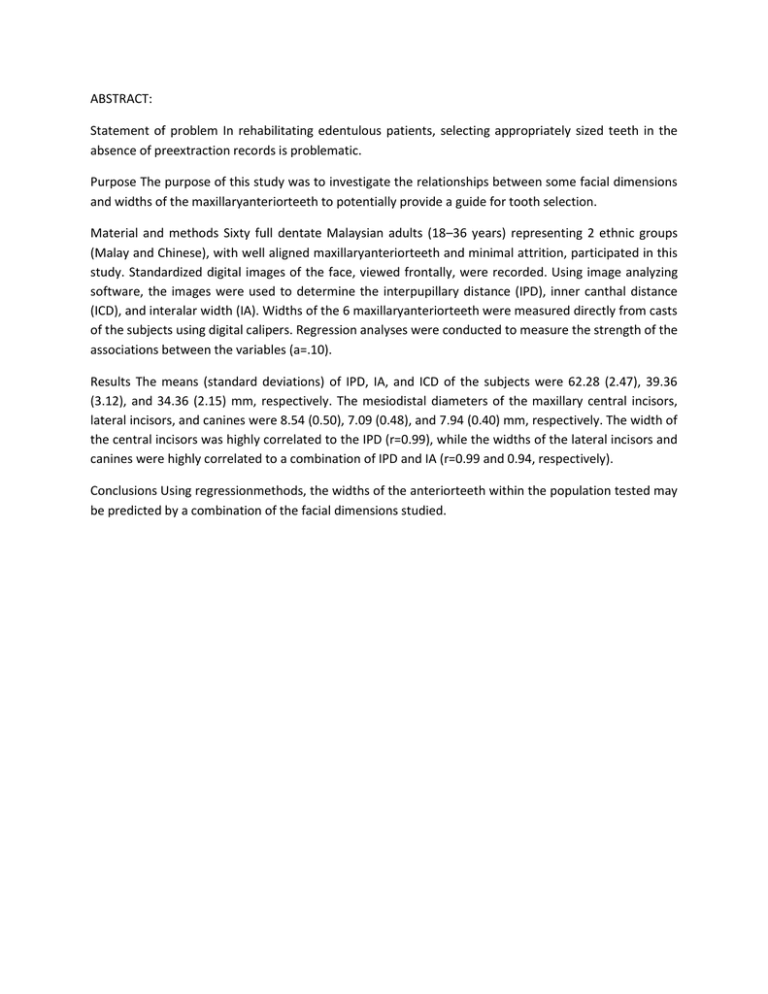
ABSTRACT: Statement of problem In rehabilitating edentulous patients, selecting appropriately sized teeth in the absence of preextraction records is problematic. Purpose The purpose of this study was to investigate the relationships between some facial dimensions and widths of the maxillaryanteriorteeth to potentially provide a guide for tooth selection. Material and methods Sixty full dentate Malaysian adults (18–36 years) representing 2 ethnic groups (Malay and Chinese), with well aligned maxillaryanteriorteeth and minimal attrition, participated in this study. Standardized digital images of the face, viewed frontally, were recorded. Using image analyzing software, the images were used to determine the interpupillary distance (IPD), inner canthal distance (ICD), and interalar width (IA). Widths of the 6 maxillaryanteriorteeth were measured directly from casts of the subjects using digital calipers. Regression analyses were conducted to measure the strength of the associations between the variables (a=.10). Results The means (standard deviations) of IPD, IA, and ICD of the subjects were 62.28 (2.47), 39.36 (3.12), and 34.36 (2.15) mm, respectively. The mesiodistal diameters of the maxillary central incisors, lateral incisors, and canines were 8.54 (0.50), 7.09 (0.48), and 7.94 (0.40) mm, respectively. The width of the central incisors was highly correlated to the IPD (r=0.99), while the widths of the lateral incisors and canines were highly correlated to a combination of IPD and IA (r=0.99 and 0.94, respectively). Conclusions Using regressionmethods, the widths of the anteriorteeth within the population tested may be predicted by a combination of the facial dimensions studied.
